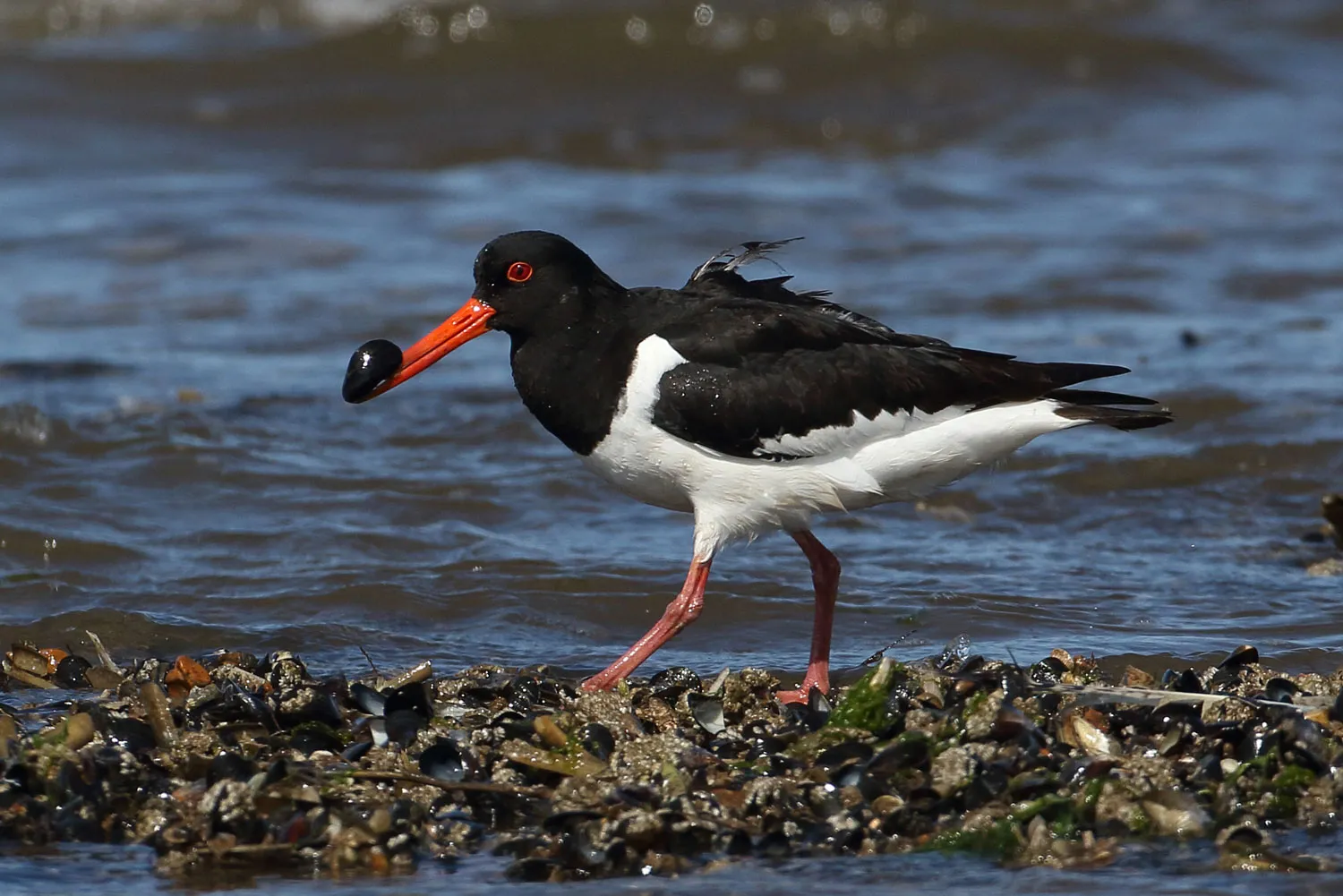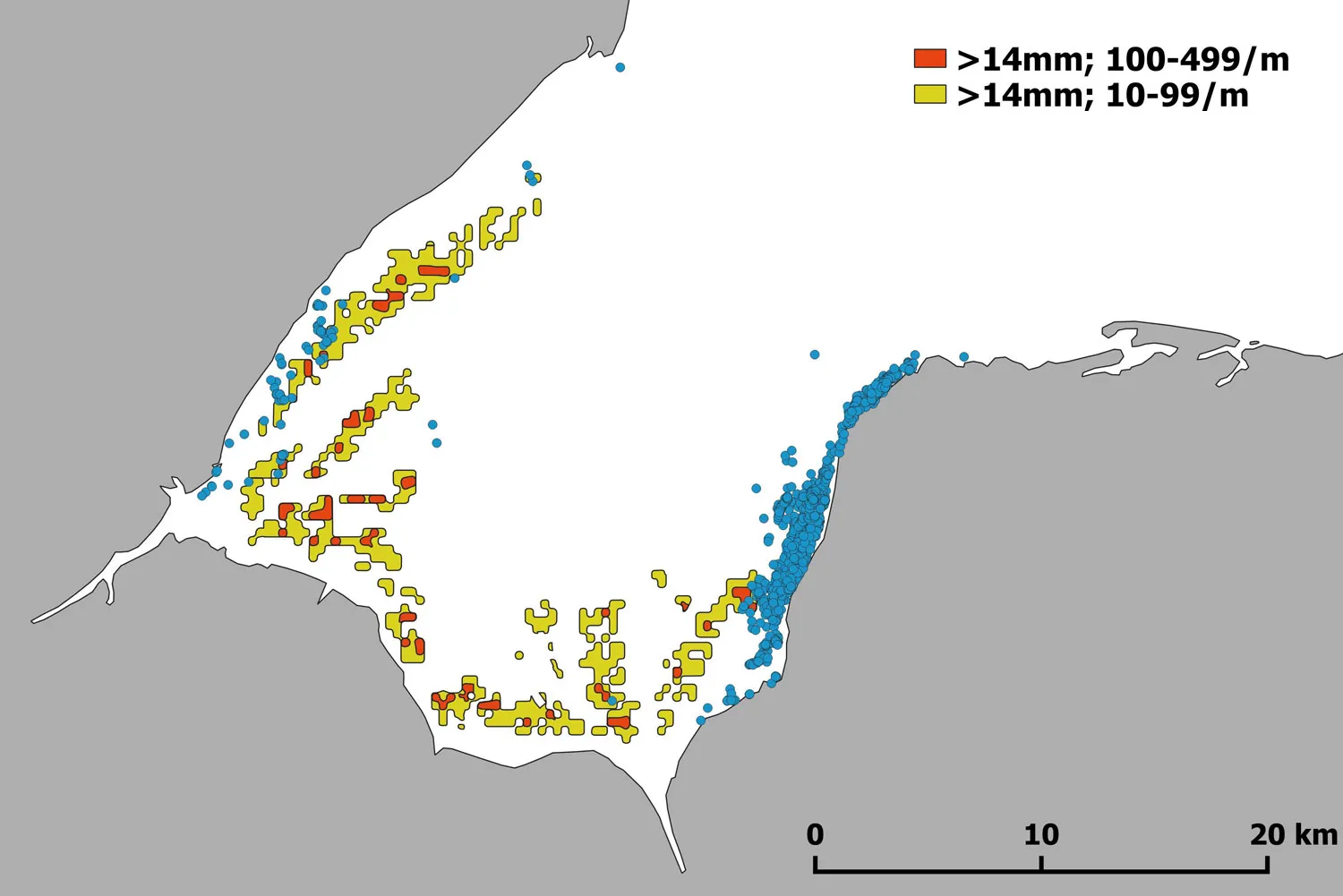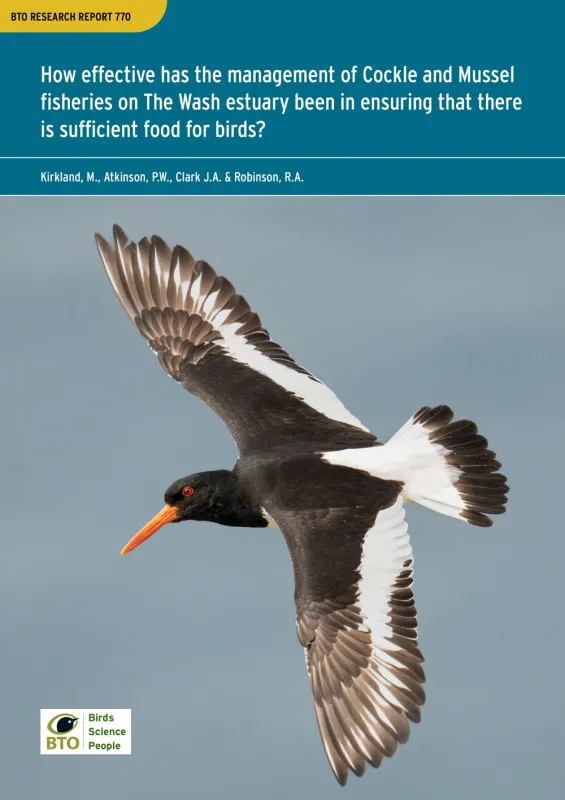The Wash is an important estuarine system, supporting large aggregations of wintering waterbirds and a number of commercial industries, including important shellfish fisheries. Understanding the relationship between the two is key to sustaining both into the future.
The Wash is an extremely important estuarine system within the UK, supporting large aggregations of wintering waterbirds. Data collected by BTO volunteers participating in the Wetland Bird Survey (WeBS) highlight its importance, with over 350,000 waterbirds known to winter here. These data have contributed to The Wash’s listing as a Special Protection Area, Ramsar site, and Site of Special Scientific Interest (SSSI). It is also a hugely important area for shellfish fisheries, holding significant areas of productive Mussel and Cockle beds.
One of the designated features of The Wash is its wintering Oystercatcher population of c.20,000 individuals. Previous BTO research has demonstrated that this Oystercatcher population is sensitive to declines in shellfish abundance, something that was particularly evident during a period of heavy fishing pressure and a crash in Mussel stocks between c.1980 and 2000. Back in 2008, management measures were developed in line with The Wash SSSI conservation objectives. These objectives stipulated that the target total stock of Cockles and Mussels should not fall below a certain value per Oystercatcher, ensuring sufficient food resources for the birds during the critical winter period.

The target stock levels are calculated using a modelling approach, which informs how the fishery is managed. At present, the modelling approach considers both the shellfish stocks and the size of the Oystercatcher population across The Wash as a single unit. However, this approach assumes that all of the birds in the population have free access to all of the shellfish resources across the whole site. Given the size of The Wash, there are likely to be energetic costs for individual birds in moving to new patches of shellfish, and benefits from remaining faithful to particular sites.
The overall distribution of Oystercatchers on The Wash is relatively well known, and ringing data show that fidelity to roost sites is high, but it is unclear how individual Oystercatchers move between roosts and foraging sites throughout the winter. During the winter of 2020/21, BTO staff deployed tracking devices to 10 Oystercatchers as a pilot study to collect data on how the birds used The Wash. The devices used a GPS logger to collect information on a bird’s location and a Global System for Mobile Communications (GSM) module to transmit the data through a mobile phone network.
Locations (blue) of tagged Oystercatchers in relation to cockle beds (yellow and red).

All the tagged individuals made use of multiple roost sites throughout the tracking period. While seven of the birds remained on the eastern shore, moving freely up and down the coast, two made repeat trips between the eastern and western shores, and one moved to the Humber Estuary for a month before returning to The Wash. It was also possible to examine the locations of the birds in relation to the most likely locations of the main Mussel and Cockle beds, although these can shift between years. This work confirms that individual Oystercatchers switch foraging patches, but more structured work is needed to look at birds of different ages (all of the birds tagged were full adults) and from different sites around The Wash.
Pilot studies of this kind are important when trialling new technologies, shaping future work and how it is best delivered. Being able to improve the models used to manage these important fisheries, and to safeguard the waterbirds that also rely on these resources, highlights the important role that BTO plays in informing policy and practice. These data have already altered the management approaches used in The Wash.
For more information about this work, read the BTO Research Report published in 2024.
Kirkland, M., Atkinson, P.W., Clark J.A. & Robinson, R.A. 2024. How effective has the management of Cockle and Mussel fisheries on The Wash estuary been in ensuring that there is sufficient food for birds? BTO Research Report 770. British Trust for Ornithology, Thetford, UK
